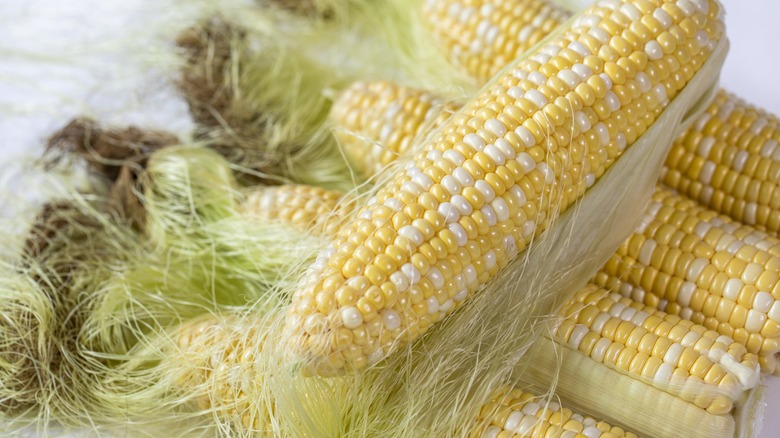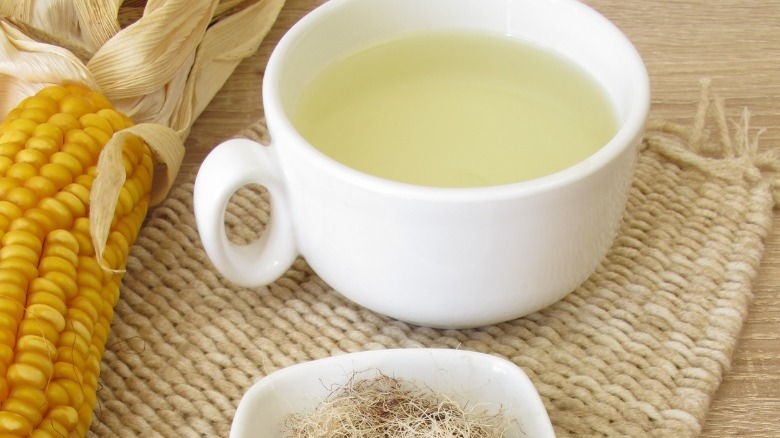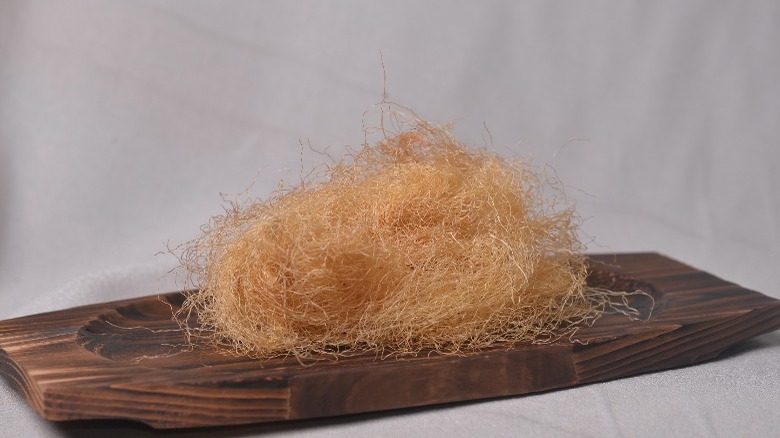What To Do With Corn Silk Instead Of Throwing It Away
Summertime is here and that means warm weather, outdoor fun, picnics, barbeques, and corn season. When it comes to cookout time, there's nothing better than juicy corn-on-the-cob, vibrant and simple corn salads, and elote or Mexican street corn.
Once you're done using the kernels, there are still loads of delicious uses for the rest of this starchy vegetable's natural packaging. Tap the endless possibilities available to you via leftover corn husks like making a batch of fresh tamales, or using them as nature's en papillote, baking up a mouthwatering piece of halibut as in this Los Angeles Times recipe.
And we're not done yet because you can put nearly every part of this a-maizing plant to good culinary use — the cobs, too! Watch them work their magic in homemade corn stock for soups or dry them out for later to use in place of wood chips for grilling or smoking meats, as food production sustainability non-profit FoodPrint suggests.
But that still leaves one part of the corn behind. While we all know the luscious bounty corn's kernels and husks can bring, most folks still throw away the corn silk — one of the most nutritious parts of this tall-growing grain.
But what can I make with corn silk?
Corn silk — those flaxen strands of silken thread, flowing from the tops of corn's protective green husks, cradling their precious golden kernels in a smooth embrace.
For many of us, corn silk is just another part of the tedious chore of cleaning and prepping corn that we must get past in order to reach the sweetest riches of corn's sunshine-tinged niblets. Here's a hack for removing those pesky corn silks quicker, but it's actually a good idea to hold onto that corn silk. Rather than trash, corn silk contains its own treasures in the form of vitamin C, potassium, and other important antioxidants and phytochemicals, according to a 2012 study published in the chemistry journal Molecules.
Long considered a natural remedy in cultures all over the world, one of the most popular uses for this nutrient-dense food is corn silk tea. Epicurious says you can brew up a soothing cup with just a tablespoon of chopped corn silk and a cup of boiling water left to steep for about 10 minutes. Add honey or sugar to taste or drink it as is.
Corn silk tops it all
Surprisingly, there's more to corn silk than just good nutrition and a warm, comforting cup of tea. You can also dry and fry your corn silks, as Epicurious suggests, turning their golden hue to a rustic brown patina and creating a lovely and crispy garnish. Use this fried corn silk as a topper for corn-rich soups like vegan corn chowder or as a crunchy sweet corn ice cream topping. Ideas in Food cleverly uses fried corn silk to make a nest in which to cradle soft-boiled eggs.
While all of this may seem a bit corny, using all parts of your corn, including the corn silk is not only a flavorsome way to make the most of your food budget and maximize your ingredients, but it's also a beautifully sustainable way to reduce your footprint in a climate change challenged world.


